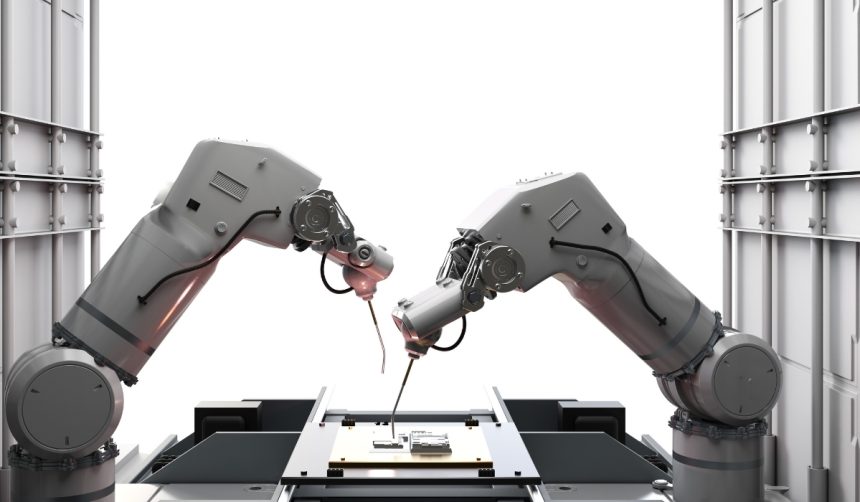A recent procedure at Mayo Clinic marked the use of EndoQuest Robotics’ Endoluminal Surgical (ELS) System during a robotic endoscopic submucosal dissection (ESD) to remove a challenging colorectal lesion. The case, performed as part of the multicenter PARADIGM clinical trial, demonstrates a shift in how surgeons approach complex gastrointestinal procedures. Surgeons now gain the ability to use flexible robotic systems for procedures traditionally limited by endoscopic instruments. As healthcare institutions continue evaluating new medical technologies, patient outcomes and ease of use remain major considerations.
EndoQuest Robotics previously announced the ELS System’s preclinical trials focused primarily on reducing procedural complexity and enhancing precision for novice users, but there was limited documented success in live complex lesion removal until now. Earlier updates centered on device development, securing regulatory milestones, and planning trial enrollment. The latest procedure at Mayo Clinic represents a practical application, supplementing earlier laboratory and simulated trial data with evidence from a real clinical setting.
How does the Endoluminal Surgical System benefit GI procedures?
The ELS System was designed to overcome the technical barriers seen with standard endoscopic instruments, aiming to simplify advanced procedures like ESD. Dr. Norio Fukami, the Mayo Clinic surgeon who led the procedure, said,
“The device was instinctive and easy to use, enabling dynamic traction and counter-traction of surgical technique, and made a complex procedure that would traditionally be much more challenging feel relatively straightforward.”
This approach supports the idea that robotic assistance may allow more natural and reproducible endoluminal procedures, broadening the accessibility of advanced interventions to more physicians.
What challenges do clinicians face with endoscopic techniques?
Clinicians have long recognized that procedures like ESD are technically challenging and require a steep learning curve due to the limitations of existing endoscopic technology. The complexity often discourages widespread adoption despite the potential for minimally invasive care. According to data from Brigham and Women’s Hospital, the EndoQuest ELS System has helped reduce the learning curve, allowing novice practitioners to perform advanced techniques more effectively when compared to conventional approaches. Dr. Todd Wilson of EndoQuest highlighted the trend in the field by stating,
“With a greater than 50% increase in the number of advanced endoscopy fellowship programs over the past decade, there is clearly a growing interest in advancing endoluminal, organ-sparing care, and our technology is positioned to drive this therapeutic shift.”
How is the PARADIGM Trial advancing the technology?
The ongoing PARADIGM Trial is currently enrolling participants across five major U.S. healthcare centers, evaluating the clinical performance, safety, and workflow impact of the ELS System in lower GI tract applications. Data from this multicenter trial are intended to inform a regulatory submission for U.S. marketing authorization for the device. Following a Series D-2 funding round in July, EndoQuest has committed to further development and trial execution, with the ELS System remaining an investigational device pending FDA review.
While the ELS System is being positioned as a flexible alternative to traditional surgical and endoscopic methods, prior focus was largely on device approval and technology demonstration. The latest application at Mayo Clinic provides insight into real surgical workflows and hints at the future role of robotics in gastrointestinal medicine. Development within this sector parallels similar innovations from other surgical robotics pioneers, as seen with platforms like Intuitive Surgical’s da Vinci systems, though each targets different specialties and levels of invasiveness.
Robotic systems in endoluminal surgery are anticipated to lower procedural barriers, making advanced treatments more accessible and potentially cost-effective. Surgeons considering new techniques should evaluate clinical trial outcomes and workflow integration alongside traditional factors such as safety, training requirements, and long-term patient results. For patients, the promise of less invasive interventions could reduce recovery times and lead to fewer surgical complications in suitable gastrointestinal cases. As more clinical data are made public, comparative studies with established platforms will further clarify the appropriate use cases for flexible robotic surgical systems.
- The Mayo Clinic completed a robotic ESD using EndoQuest’s ELS System.
- The PARADIGM Trial is assessing device safety and effectiveness across five institutions.
- EndoQuest’s ELS System remains investigational and awaits FDA clearance.










